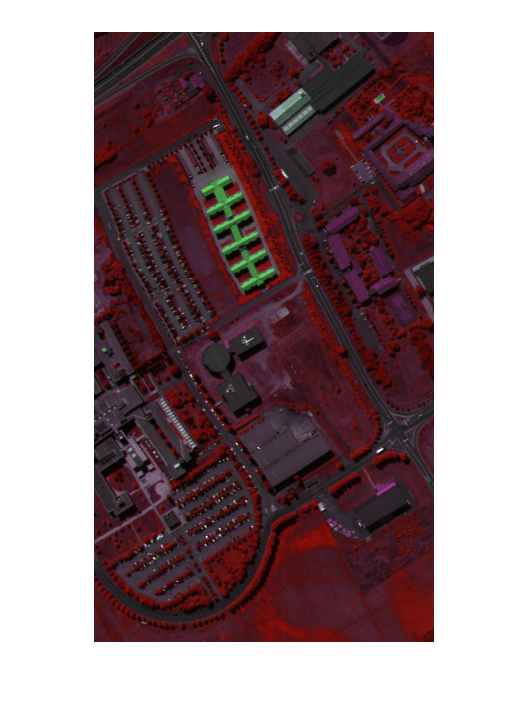colorize
Estimate color image of spectral image
Syntax
Description
coloredImage = colorize(spcube)spcube is a hypercube object and an RGB image when
spcube is a multicube object.
coloredImage = colorize(spcube,band)band.
[
returns the indices of the bands used in the color image when coloredImage,indices] = colorize(___)spcube is
a hypercube object.
___ = colorize(___,
specifies options using one or more name-value arguments in addition to any combination of
arguments from previous syntaxes. Use this syntax to specify the options to estimate
false-colored and color-infrared (CIR) images of the input data.Name=Value)
Note
This function requires the Hyperspectral Imaging Library for Image Processing Toolbox™. You can install the Hyperspectral Imaging Library for Image Processing Toolbox from Add-On Explorer. For more information about installing add-ons, see Get and Manage Add-Ons.
The Hyperspectral Imaging Library for Image Processing Toolbox requires desktop MATLAB®, as MATLAB Online™ and MATLAB Mobile™ do not support the library.
Examples
Input Arguments
Name-Value Arguments
Output Arguments
Version History
Introduced in R2020a

